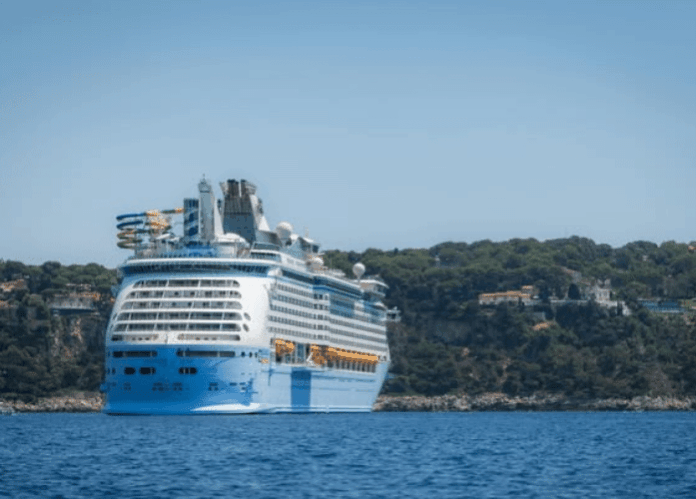After months of tensions around the management of cruise ships, the State has presented a common framework for the Azurean ports. Objective: to harmonize practices and reduce environmental impacts without opposing economy and ecology.
The round table held on Friday, October 10 in Nice by the Prefect of Alpes-Maritimes, Laurent Hottiaux, and the Mediterranean Maritime Prefect, Christophe Lucas, marks a turning point. Around the table, local authorities, economic actors, and representatives of the maritime sector discussed with a unified voice: how to sustainably regulate cruise stopovers in the department?
The Maritime Union 06 (UM06) welcomes this initiative. It sees it as “an important step towards a calm and balanced management of an activity that contributes to the local economy while meeting environmental expectations.” For the ports of Nice, Villefranche-sur-Mer, Beaulieu, and Cannes, the regulation is now intended to be concerted, predictable, and shared.
The Azurean coast indeed imposes particular constraints: large ships cannot dock at the quay and must anchor offshore. This configuration requires adapted measures to limit nuisances and ensure better local acceptance.
The prefects presented several rules that will be included in an upcoming decree. The number of passengers disembarked per port will not exceed 3,000 people. The annual average must remain below 2,000. Only one ship carrying more than 1,300 passengers can be accommodated per day. In July and August, the limit is set at 15 stopovers per month.
These thresholds mark a clear inflection from past practices. In Cannes, the municipality had set a limit of 3,000 passengers, while the Nice Côte d’Azur Metropolis wanted to reduce it to 2,500 in Villefranche. The State goes further while seeking to standardize the rules.
Finding a balance between economy and environment
For Nice and its metropolis, this decision puts an end to several months of tension. In early July, an attempt to unilaterally limit the access of Villefranche port to ships with fewer than 2,500 passengers had caused an open crisis. The refusal to comply by the cruise ship Voyager of the Seas led to a standoff between the Metropolis and the Prefecture. The administrative tribunal later confirmed that only the prefect could regulate the entry and exit of ships.
Since then, dialogue has resumed. A round table in July allowed discussions to reopen. The one on October 10th solidified it. The State now wants the regulation to fit into a coherent departmental framework, to prevent restrictions in one port from shifting stopovers to another.
For UM06, this method is the right one: “cruising doesn’t need oppositions, it needs a common direction.” The organization recalls that since 2010, cruise traffic in Nice and Villefranche has been reduced by three. The new measures should further reduce the number of stopovers.
The priority given to companies adhering to the Sustainable Cruise Charter in the Mediterranean, signed in June 2025, is another lever. It encourages the use of less polluting fuels, the reduction of emissions at the quay, and environmental vigilance. More than 80% of global companies, gathered within CLIA, have already adhered. UM06 hopes that the Azurean municipalities will also become signatories to ensure a coherent hospitality policy.
The prefects will also have new tools. In case of a pollution peak, they will be able to suspend stopovers or impose additional restrictions near the coasts. Ports will have to report any suspicious smoke emissions to the Mediterranean Interregional Sea Directorate.
This regulation places cruising among the most regulated transport activities in the territory. The State justifies this rigor by the density of the coast and the need to reconcile tourist attractiveness and environmental protection.
For economic stakeholders, it is now a matter of finding a balance. “This regulation must be a compass and not a brake,” estimated the Maritime Union.
Nice in focus for the next steps
The Nice Côte d’Azur Metropolis is directly affected by this new governance. The ports of Nice and Villefranche, often at the forefront of the debate, are becoming sites of experimentation for the departmental maritime policy.
The measures are expected to take effect from the 2026 season, following public consultation and the publication of the prefectural decree. They will affect nearly 200,000 passengers according to local estimates. For the companies, it will mean reorganizing schedules, often set two years in advance.
While the initiative marks a constraint for the sector, it also opens a clear perspective. The authorities want “a coordinated and sustainable approach adapted to the specifics of the Azurean coast.” A method that, for the first time, places Nice at the center of a shared maritime policy at the departmental level.
The cruise, a symbol of Azurean tourism, thus enters a new phase. Less volume, more regulation. A balance still fragile, but which could ultimately redefine the place of Nice and neighboring ports on the Mediterranean maritime tourism map.


